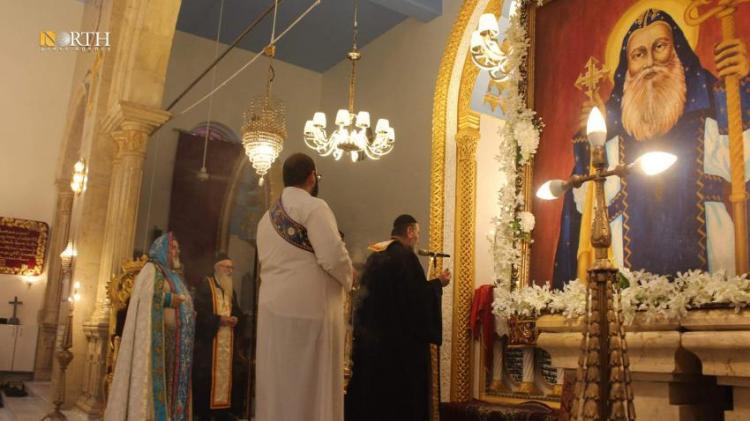Albeth Kazo, a collection of tunes hidden in the Syriac Orthodox Church
Qamishli – North-Press Agency
Reem Chamoun – Charbel Henno
The history of church melodies of the Syriac Orthodox dates back to the beginnings of their conversion to Christianity in the first century AD, as the Syriacs, later, collected their hymns and religious songs in a huge book called "Albeth Kazo", which means storing melodies in the Syriac language.
In the Church Virgin Mary in the city center of Qamishli, pastor Saliba Abdullah assured to North-Press that the Syriac Orthodox Church takes all the melodies of its daily, Sundays and holidays prayers from the book "Albeth Kazo.”
Mar Afram al-Syriani (306-373 AD) had the greatest role in composing this book, which is considered as a valuable store of church melodies, which have been used by the Orthodox Syriacs in their prayers until now, "while local and foreign singers use them in their own songs."
The Syriac Orthodox Church is one of the largest churches in the city of Qamishli and includes six other churches, the Armenian Orthodox Church, the Chaldean Church, the Oriental Assyrian Church, the Eastern Assyrian Church, the Syriac Catholic Church, and the Armenian Catholic Church.
From daily prayers to Sundays'
Moreover, Abdullah said that "Albeth Kazo" contains up to about 900 melodies, including (Ishhim), which means the simple melodies section according to the Syriac language, which is the section used in the weekly obligatory prayers from Sunday evening to Saturday morning. On the other hand, there is (Finqitho) section, which lies for the prayers of Saturday evening and Sunday morning, in addition to religious and holy days.
Abdullah added on the regard of the Collection of Tunes: The book of "Albeth Kazo" contain a variety of melodies, as it also contains "Sibilotho" (a form of church music, eight in number), which the church uses in its prayers in a coordinated manner, as the feasts of Virgin Mary takes the first melody, while the feasts of the saints use the eighth melody, and the churches alternate the rest of the tunes during successive weeks, so that each week a different melody from the other is used, to reflect a kind of variety to the ritual melodies inside the churches.
Diversification of melody and spirituality of the occasion
Furthermore, Priest Saliba Abdullah said: "to diversify the melodies in the prayers of the Syriac Church indicates the spirituality of the religious occasion and the divine ritual."
According to the Syriac Orthodox Church, there is some kind of coordination and harmony between the eight melodies. The first melody is consistent with the fifth one, the second with the sixth, the third with the seventh, and the fourth with the eighth, in addition to that "the eastern musical key is taken from the melodies of the Syriac Orthodox Church," according to the priest.
Abdullah noted that the wars that occurred throughout the history of the Christians, "especially the massacres of Seyfo early last century, caused the loss of hundreds of Syriac church tunes."
A hidden treasure
Abboud Fouad, an artist who sings in the dialect of al-Jazira, described the composition of "albeth Kazo" as "a precious and hidden treasure.” He said that these tunes are still "confined to the throats of those chanting in the Syriac Church, as the tunes are accurate in their musical details."
The popular singer Abboud Fouad, who uses ecclesiastical tunes in his songs, hopes that the church and the parties concerned are interested in inserting the book of Syriac tunes in the special academies of music, "so that the new generation would learn, as being a precious musical treasure," as he said.

